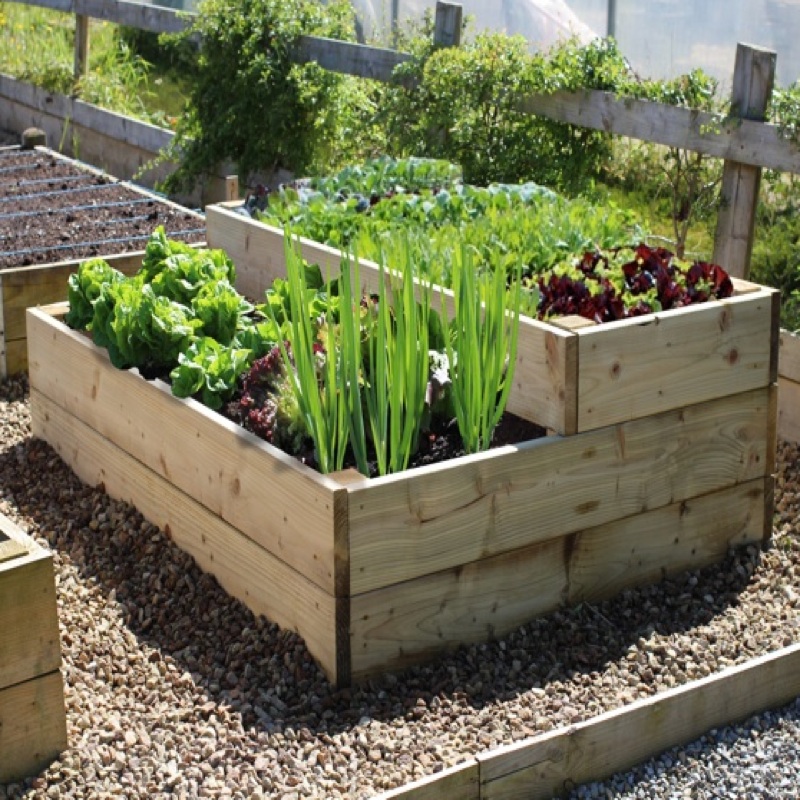Master Raised Bed Gardening, Beginner's Guide

Master Raised Bed Gardening: Beginner's Guide
Raised Bed Gardening for Beginners: Why It's a Game-Changer
Imagine having your own little farm right in your backyard, filled with fresh vegetables and vibrant flowers. Sounds amazing, right? Raised bed gardening for beginners is where you should start. It's like having a perfectly organized, easy-to-manage mini garden that even the newest of green thumbs can handle.
What is Raised Bed Gardening?
Raised bed gardening is like giving your plants a luxury apartment with perfect soil, great drainage, and no pesky weeds. It's a method where you grow plants in beds that are elevated above the surrounding soil, usually enclosed by a frame.
Benefits of Raised Bed Gardening for Beginners
Better Soil Control
One of the biggest advantages is soil preparation. You get to choose the perfect soil mix for your plants, ensuring they have the best nutrients and drainage. No more dealing with clay or sandy soil that's tough to grow in.
Easier on Your Back
Since the beds are raised, you don't have to bend over as much. It's like having a comfortable chair to sit in while you garden. Your back will thank you!
Improved Drainage
Raised beds provide excellent drainage, preventing waterlogging and root rot. It's like giving your plants a comfy bed that's not too soggy or too dry.
DIY Raised Beds: Building Your Own
Building your own raised beds is a fun DIY project. You can use materials like wood, metal, or even recycled materials. Here's a simple guide:
Choose Your Location Pick a spot with plenty of sunlight, at least 6-8 hours a day.
Select Your Materials Pressure-treated wood, composite boards, or even galvanized metal can work great.
Build the Frame Make it at least 12 inches deep to provide enough room for roots. Ensure it's level and well-anchored.
Vegetable Gardening in Raised Beds
Raised beds are perfect for vegetable gardening. You can grow a variety of veggies like tomatoes, lettuce, carrots, and more. The controlled environment helps prevent pests and diseases.
Garden Design: Planning Your Raised Bed Garden
Size and Shape
The size and shape of your beds depend on your space and what you want to grow. A common size is 4 feet by 8 feet, which allows you to reach all parts of the bed without stepping into it.
Pathways
Leave enough space between beds for pathways. This makes it easier to move around and tend to your plants.
Plant Selection
Choose plants that grow well together. For example, tomatoes, basil, and marigolds make great companions.
Soil Preparation: The Key to Success
The right soil mix is crucial. A good blend is 60% topsoil, 30% compost, and 10% potting soil. This provides a balance of nutrients, drainage, and water retention.
Planting Your Raised Bed Garden
Spacing
Follow the spacing guidelines on your seed packets. Overcrowding can lead to competition for nutrients and light.
Depth
Plant seeds at the recommended depth. Too shallow or too deep can affect germination.
Watering Tips for Raised Bed Gardening
Consistency is Key
Water your plants consistently. Raised beds can dry out faster, so regular watering is essential.
Use a Soaker Hose
A soaker hose delivers water directly to the roots, reducing evaporation and runoff.
Mulch
Adding a layer of mulch helps retain moisture and suppresses weeds.
Maintaining Your Raised Bed Garden
Weeding
Regular weeding prevents nutrient competition and keeps your garden looking neat.
Fertilizing
Use organic fertilizers to keep your soil rich and healthy. Compost is a great option.
Harvesting
Harvest your veggies at the right time to encourage more growth and enjoy fresh produce.
For more detailed tips, check out this comprehensive guide on raised bed gardening.
Conclusion
Raised bed gardening for beginners is a fantastic way to start your gardening journey. It offers better control over soil, improved drainage, and easier access to your plants. With a bit of planning and care, you'll be harvesting your own fresh produce in no time.
FAQs
1. What is the best size for a raised bed?
A common size is 4 feet by 8 feet, but it depends on your space and what you want to grow.
2. What is the best soil mix for raised beds?
A good blend is 60% topsoil, 30% compost, and 10% potting soil.
3. How often should I water my raised bed garden?
Water consistently, ensuring the soil stays moist but not waterlogged.
4. Can I grow flowers in a raised bed?
Yes, raised beds are great for growing both vegetables and flowers.
5. How do I prevent weeds in my raised bed garden?
Regular weeding and using mulch can help prevent weeds.
0 Response to " Master Raised Bed Gardening, Beginner's Guide"
Post a Comment